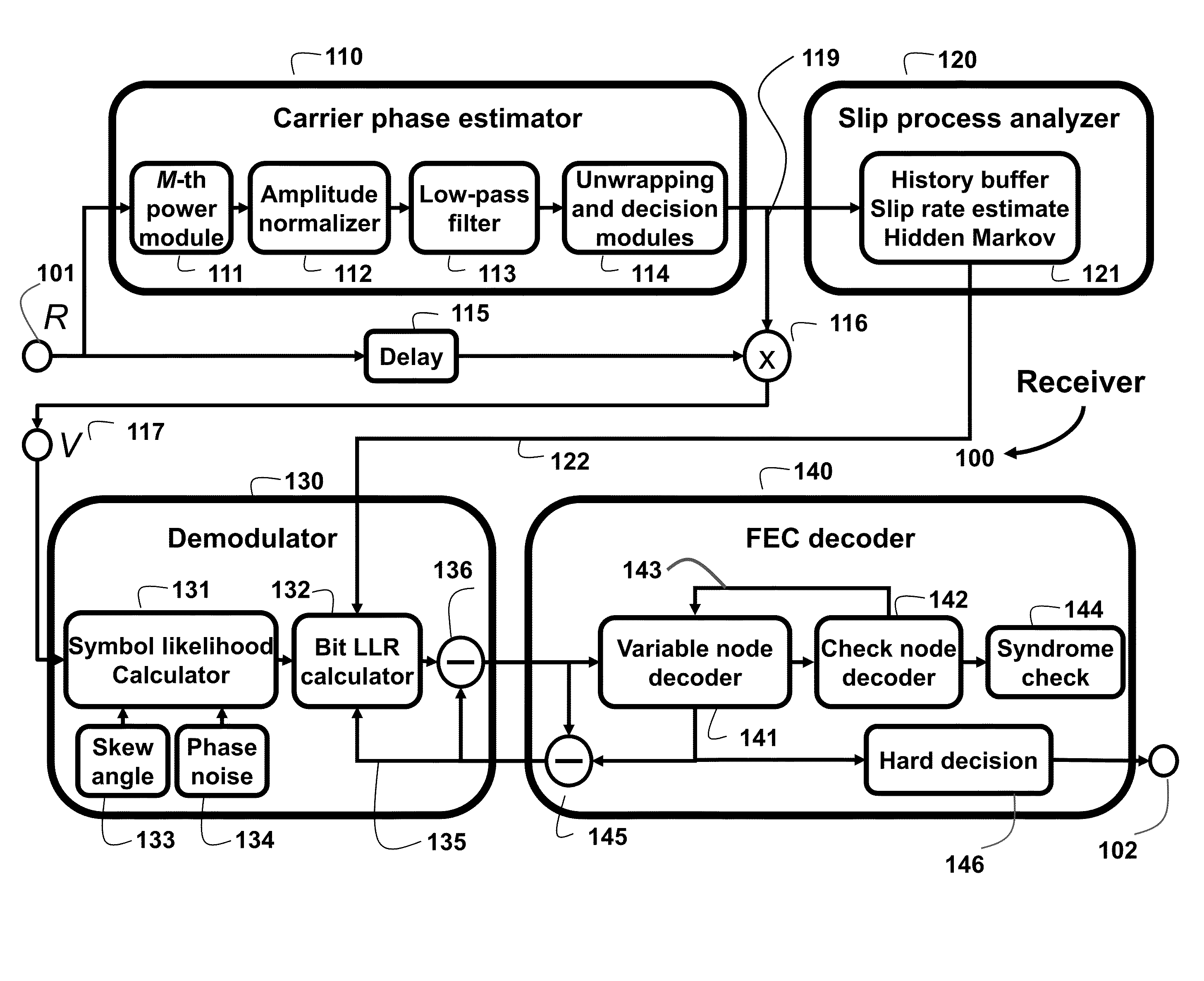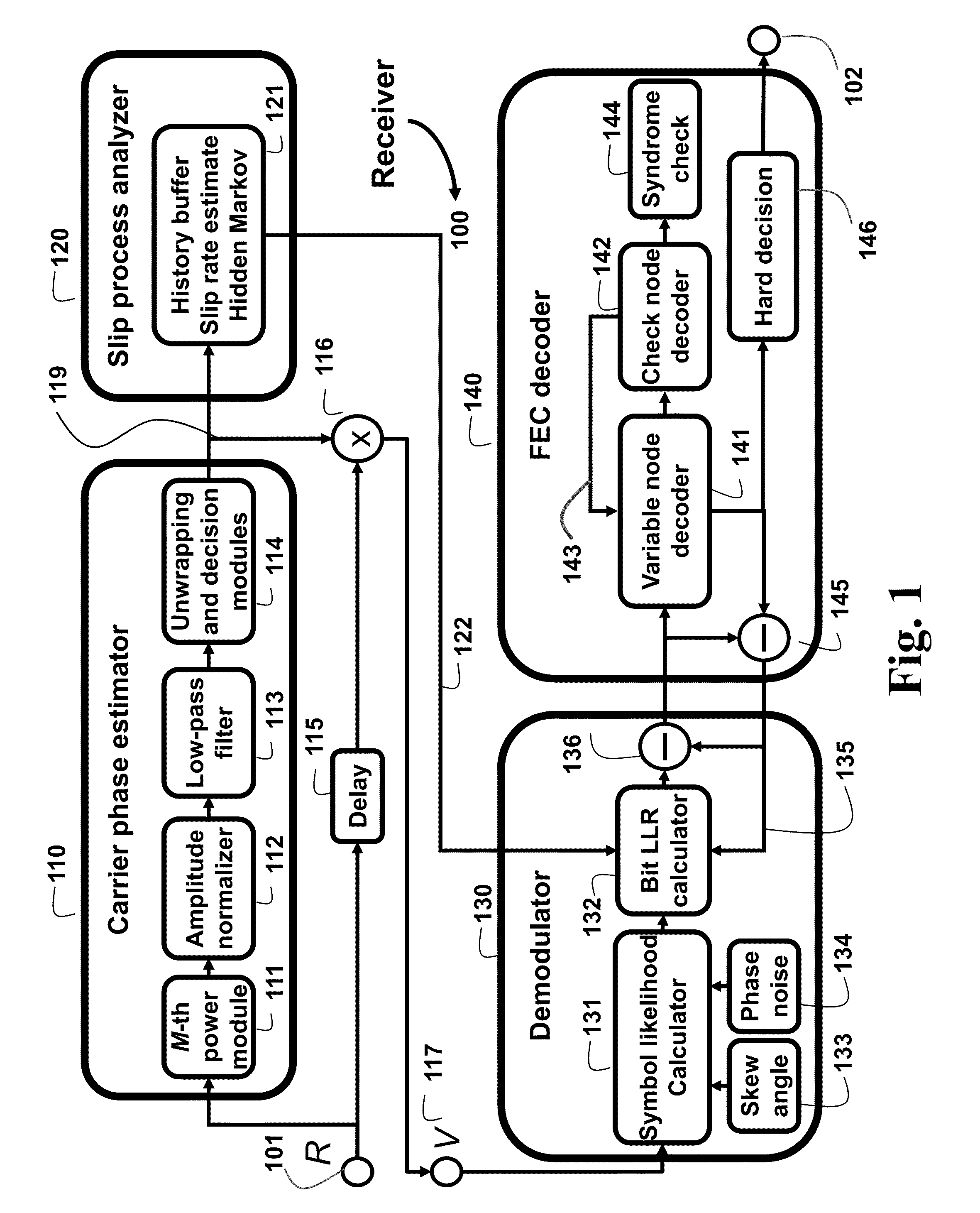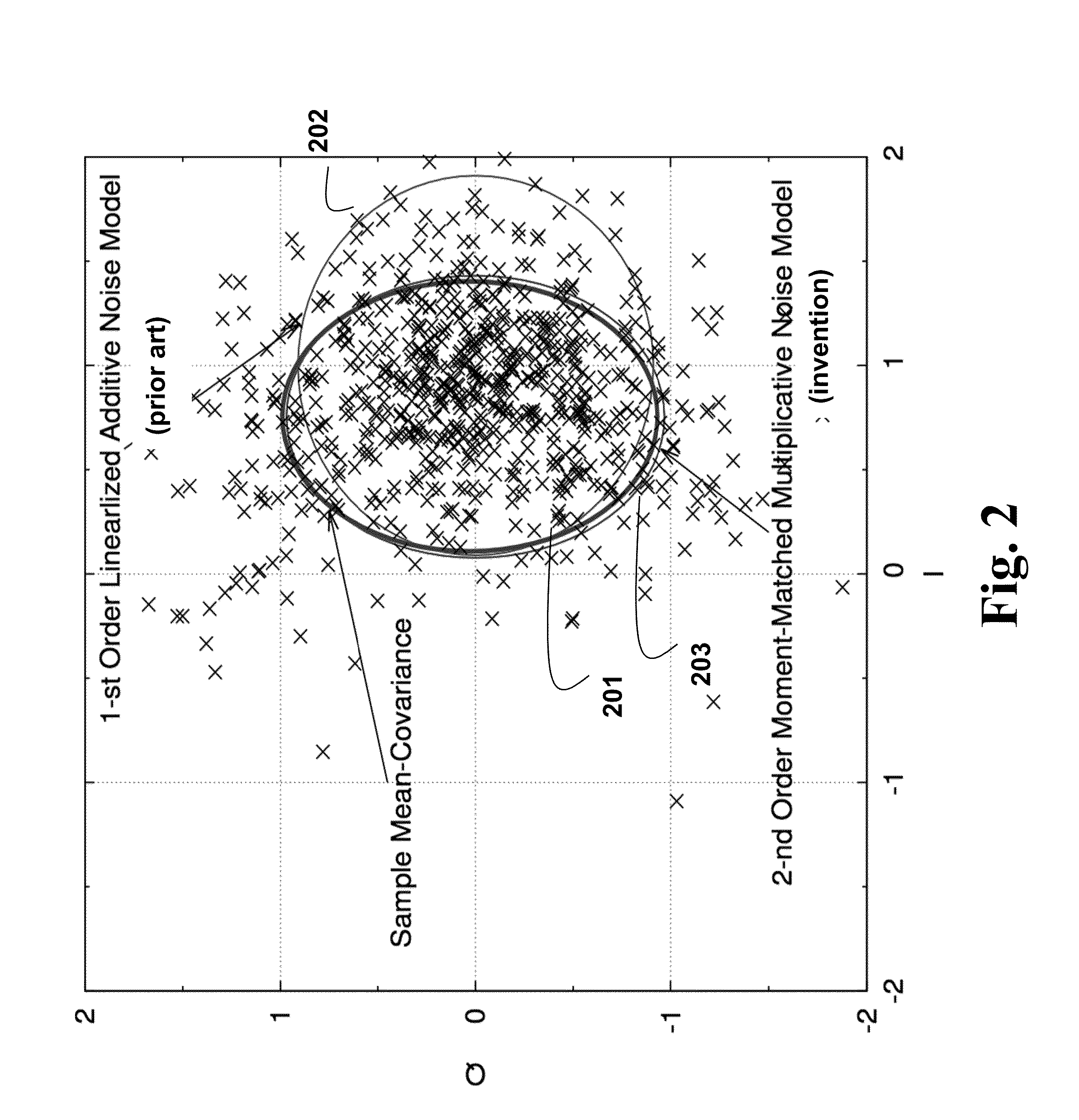System and Method for Recovering Carrier Phase in Optical Communications
a carrier phase and optical communication technology, applied in the field of optical communication, can solve the problems of phase ambiguity, additional problems, blind cpe methods that do not perform well for high-order qam signal constellations, etc., and achieve the effect of improving the performance of cpe and/or demodulator and minimizing the mean-square error
- Summary
- Abstract
- Description
- Claims
- Application Information
AI Technical Summary
Benefits of technology
Problems solved by technology
Method used
Image
Examples
Embodiment Construction
[0019]FIG. 1 is a block diagram of a system and method for decoding data sent from a transmitter to a receiver 100 over an optical communications channel, and in particular to detecting a coherent signal at an optical communications receiver according to embodiments of the invention.
[0020]The system includes a carrier phase estimator (CPE) 110, a slip process analyzer 120, a demodulator 130, and a forward-error-correction (FEC) decoder 140. The embodiments of the invention make it possible to recover cycle slips, I-Q angular skew and residual phase noise, where I and Q represent an in-phase component of the waveform and a quadrature component, respectively.
[0021]In some embodiments of the invention, the CPE 110 includes an Mth power module 111, an amplitude normalizer 112, a low-pass filter 113, and a phase unwrapping and decision modules 114. This embodiment is based on a Viterbi-and-Viterbi (V&V) blind CPE procedure. The Mth power module 111 feeds received data R or symbols 101, w...
PUM
 Login to View More
Login to View More Abstract
Description
Claims
Application Information
 Login to View More
Login to View More - R&D
- Intellectual Property
- Life Sciences
- Materials
- Tech Scout
- Unparalleled Data Quality
- Higher Quality Content
- 60% Fewer Hallucinations
Browse by: Latest US Patents, China's latest patents, Technical Efficacy Thesaurus, Application Domain, Technology Topic, Popular Technical Reports.
© 2025 PatSnap. All rights reserved.Legal|Privacy policy|Modern Slavery Act Transparency Statement|Sitemap|About US| Contact US: help@patsnap.com



